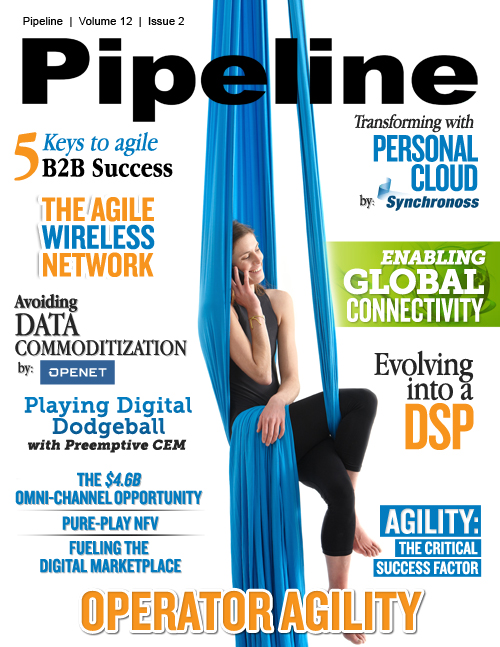Evolving into a Digital Service Provider (DSP)
The next-gen catalog system must exhibit real-time contextual awareness of what services are available, per inventory, per region, and per customer. It must understand the inter-dependencies of the product or bundle, and be cognizant of marketing incentives and interface with loyalty programs. Finally, it must incorporate real-time recommendations based on Big Data analytics and interface with all organizational units.
Companies like Ericsson and Sigma Systems offer next-generation catalog products that manage products from conception to end of life, and directly impact the order-to-cash process. AsiaInfo helps operators leverage omni-channel CRM to ensure a consistent customer experience. Other companies like Global Capacity and Megaport are providing dynamic interfaces to thousands of network operators in regions around the world, enabling CSPs and enterprises to compare and select regional operators based on their specific needs and budget. Big Data products from companies such as IBM, Onotology, and SAS are providing real-time insights into customer behavior, service uptake, performance, and data usage. And, companies like CSG International are enabling rich multi-screen content delivery. These combined technologies can provide CSPs with a digital agility to virtually create thousands of service permutations — tailoring new, competitive offerings to meet the demands of their customers, wherever they may be.
Provisioning
New connected devices are all the rage and customer adoption is quickly accelerating. That’s the good news. The bad news is meeting customer demand for seamless activation and integration into the digital lifestyle. There are several approaches that can help here.
Amdocs has two offerings that fit the bill with its M2M Connected Device Platform and cloud-based Connected Home Solution. Amdocs customers can add value by bundling communications and IoT services together. The result: consumers enjoy a better, more holistic experience, increased value for their money, and a one-stop shop for service and support; the IoT application providers enjoy better market exposure without the need for significant upfront investment; while the CSPs can expand their customer base, increase ARPU and loyalty, while driving new revenues beyond just connectivity. OnStar and AT&T is one, great example where Amdocs has added value to joint customers.
On a more device-based level, Gemalto offers the LinqUS On-Demand Connectivity (ODC) subscription management system. With this solution, a consumer device with an embedded SIM can securely connect to a mobile network, anytime and anywhere, using Over-The-Air remote provisioning. In this manner, users can now seamlessly activate connectivity on their devices by choosing any operator and adapted tariff plan based on their preferences and location. They can have the flexibility to dynamically add a wide variety of connected devices on-the-go, or switch to local operators for lower rates when traveling. The company recently showcased a demo at Mobile World Congress Shanghai with technology partner ZTE.
"The number of connected devices in China is expected to surpass the country's population very soon," said Suzanne Tong-Li, President for Greater China and Korea at Gemalto, at the event. "This demonstration with ZTE allows us to not only display the capabilities of ODC, but also gather vital information about different use cases their customers want, to drive the development of IoT ecosystem."



















